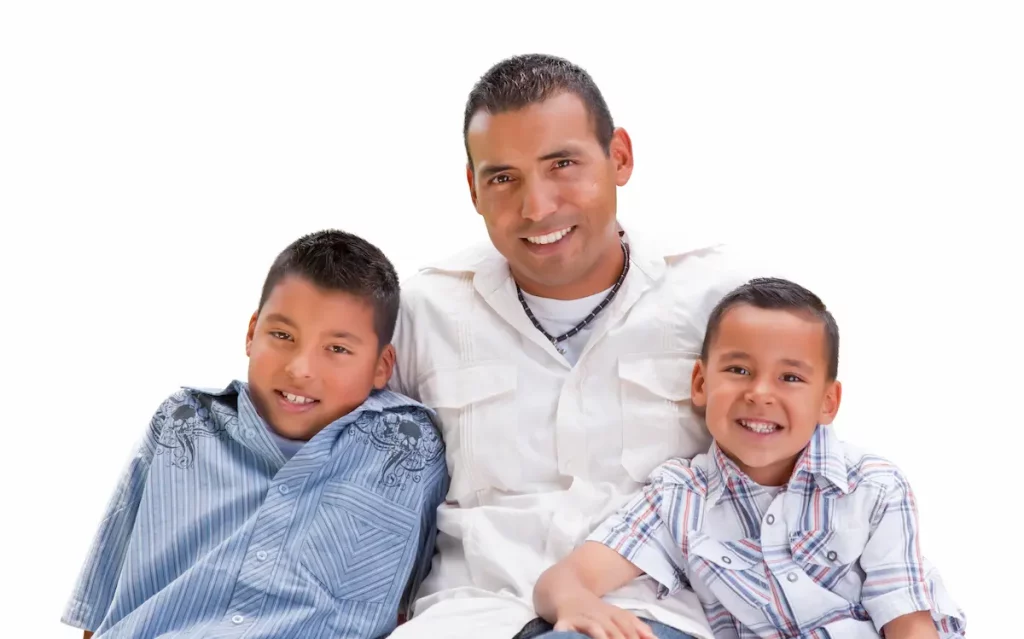Family tendency refers to several members of the same family sharing similar beliefs, behavioral patterns, professional careers, and medical and/or psychological conditions. They’re not genetic, but environmental factors that create traits that pass to the next generation of the family.
Our family is one of the only things that typically remain with us throughout our entire lives. More often than not, we can be very similar in terms of behavior and response, yet completely different at the same time. Twins can often start out identical but later become complete opposites. Families have tendencies for ideas and beliefs, but what does it all mean?
Family tendencies are a fascinating topic that can teach you more about yourself than you realize. It links to the behavior and the type of family environment children experience. We’ll explore examples of tendencies and examine how they can help identify medical conditions, too.

Related Reading: What Does a “New Addition to the Family” Mean? [DIFFERENT EXAMPLES]
What Is Family Tendency?
When a thought, activity, or behavior appears automatically, people consider it a natural response. Families that exhibit the same idea or conduct as multiple other family members without thinking about it have a natural family tendency.
How Are Family Tendencies and Family Traits Different?
When there are common family traits that run across members of the same family but have no genetic relationship, it indicates family tendencies. However, a familial characteristic is not the same as a genetic trait. Instead, it suggests that a trait becomes a part of a family when passed down through the generations, but it is not genetically linked. For example, hair texture and color and eye color are genetically linked, but the way you twirl your pasta isn’t.
As a result, family traits are distinctive qualities passed down through generations but do not have a proven genetic relationship. According to some experts, a family tendency is a type of family characteristic comparable to learned or acquired qualities than inherited ones.
Related Reading: What Is a Family Trait? Definition, Meaning, And Examples
What Are the Tell-Tale Signs of Family Tendencies?
Family characteristics can also explain a person’s thinking and behavioral habits. As a result, understanding familial characteristics might help you forecast or evaluate people’s quirks. In terms of medicine, it can even aid in predicting illnesses.
Furthermore, family traits can affect family tendencies, resulting in genetic similarities shared by family members, such as illnesses, intellect, and height. It’s prevalent in health concerns like weight gain, diabetes, and even mental health issues passed down by previous generations.
The same family members can exhibit similar lifestyle choices, space, material, contemplation, everyday activities, and eating habits. People learn to behave in accordance with the environment around them; hence, family tendency impacts a child’s developmental domain.
Related Reading: How to Help Your Family With House Work
Is a Family Tendency a Sure Thing?
It’s vital to realize that although the propensity for family tendencies is reasonably common, they are not guaranteed. Individuals are not always identical to the rest of the family. It only suggests a possibility, as many people exhibit a variety of actions and features.
Due to various inherited biological features, it may suggest depression vulnerability rather than a gene. For example, a thinning of the brain’s right and left cortex is one of them.
Related Reading: 8 Benefits of Family Support
Obesity Qualifies as a Family Tendency
Obesity is also a familial trend, prominent when obese parents encourage their children to overeat, causing them to become obese, too.
Health care providers gather family health history regularly to identify people at high risk of obesity-related disorders such as cancer, cardiovascular disease, and diabetes. The impacts of shared genetics and environment among close relatives are traceable in the family’s health history.
Families can’t alter their genes, but they can modify the environment in which they live to promote a healthy diet and physical exercise. These improvements can improve the health of family members and the health of future generations.
While genetics might play a part in obesity, parental behavioral patterns also play a prominent role. It’s easy to pick up on our parents’ behaviors, whether good or harmful. It’s usually clear to see when parents and children share the same patterns regarding buying, eating, cooking, and exercising activities.
A family’s food and exercise habits directly impact children’s weight even into maturity.

Academia Qualifies as a Family Tendency
Intelligence and academic performance also have their roots in family tendencies, clearly demonstrating familial propensity. Parents with higher levels of education are more likely to enroll their children in extracurricular activities and send them to a better schools. However, IQ itself is genetically linked.
If one or more parents excel as a musician, mathematician, or artist, most likely one or more of the children will be interested in the same.
The Same Line of Work Is a Family Tendency
A family may pursue the same course of study, trade, or career, mainly if one of the parents owns a business. In essence, it ensures that the child will have work if they so wish.
Some families have a proclivity towards becoming attorneys, while others choose to become teachers, police officers, or marines. Another example is a doctor’s family, in which the mother, father, two sons, niece, and granddaughter all become physicians.
Alzheimer’s Is a Medical Family Tendency
Alzheimer’s disease presents itself as a form of dementia that affects the brain, impairing one’s capacity to think, remember, and even behave. It’s the most prevalent type of dementia, and the causes relate to a mix of genetics, environmental factors, and lifestyle choices.
Dominantly inherited Alzheimer’s disease is one of the kinds of Alzheimer’s disease. It implies that if one parent passes down one Alzheimer’s gene, the child will develop the illness even if the other parent does not. The Alzheimer’s gene will have the upper hand over the normal gene.
At this point, it becomes a genetic trait since someone who has the Alzheimer’s gene will pass it to their descendants, who will receive it and pass it on to the next generation, and so on.
Alcohol Addiction Has a Genetic Link
People genetically inclined to alcoholism have a greater chance of acquiring an alcohol use disorder than those who abuse alcohol. Although alcoholic inclinations can be inherited, social and environmental variables have a role in developing an alcohol use problem.
Some people with genes that make them prone to alcoholism are either responsible drinkers or never drink at all.
Other behavioral genes might impact an individual’s proclivity for alcoholism. People with a family history of mental diseases, such as depression and schizophrenia are more likely to develop these illnesses.
People with mental illness are at a higher risk of turning to substance misuse as a coping mechanism. Cognitive problems can be inherited from parents or environmental circumstances, highlighting the complicated relationship between heredity and addiction.
Even people with a high genetic predisposition to drug addiction must be motivated by a nonhereditary factor. An environmental element, such as work-related stress, is frequently the trigger that leads to alcohol dependence.
Related Reading: Much Water Does a Family Of 2 Use Per Month? [ANSWERED]
Multiple Languages Is a Family Tendency
Children from multilingual homes are more likely to learn and speak additional languages. Unlike monolingual families, multilingual families communicate with their children using words and phrases from various languages.
The language you speak and its cultural values are inextricably linked. People who are bicultural and multilingual are more likely to experience this impact since they have a solid foundation in various cultures.
It’s also likely that our opinions of ourselves shift from observing how people react to us in different languages. After all, identity encompasses your sense of self and how you see others and how that influences how you portray who you are.
Conclusion
Several family members who study hard, or families where most members become teachers or doctors, are clear examples of family tendencies.
Continue Reading: Is The Royal Family Inbred? [MYTHS & FACTS]

